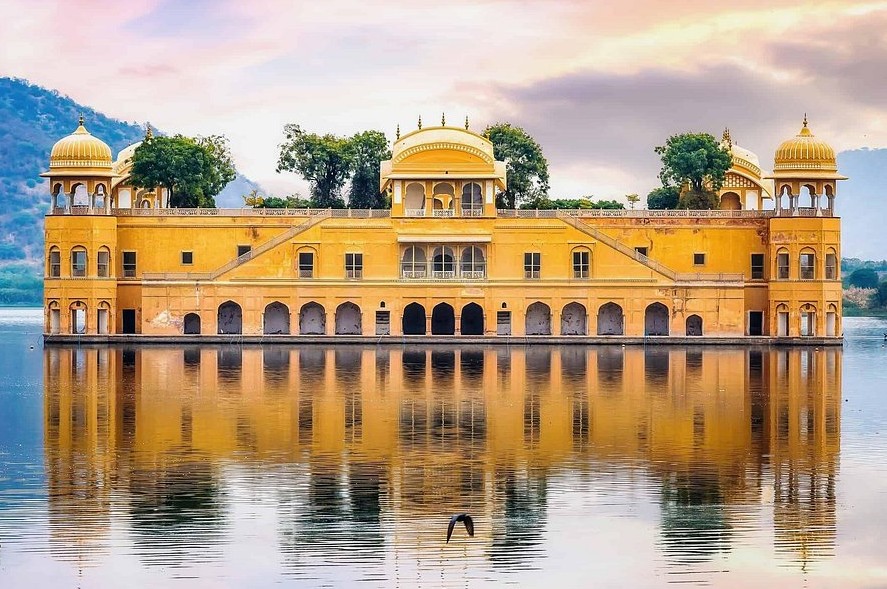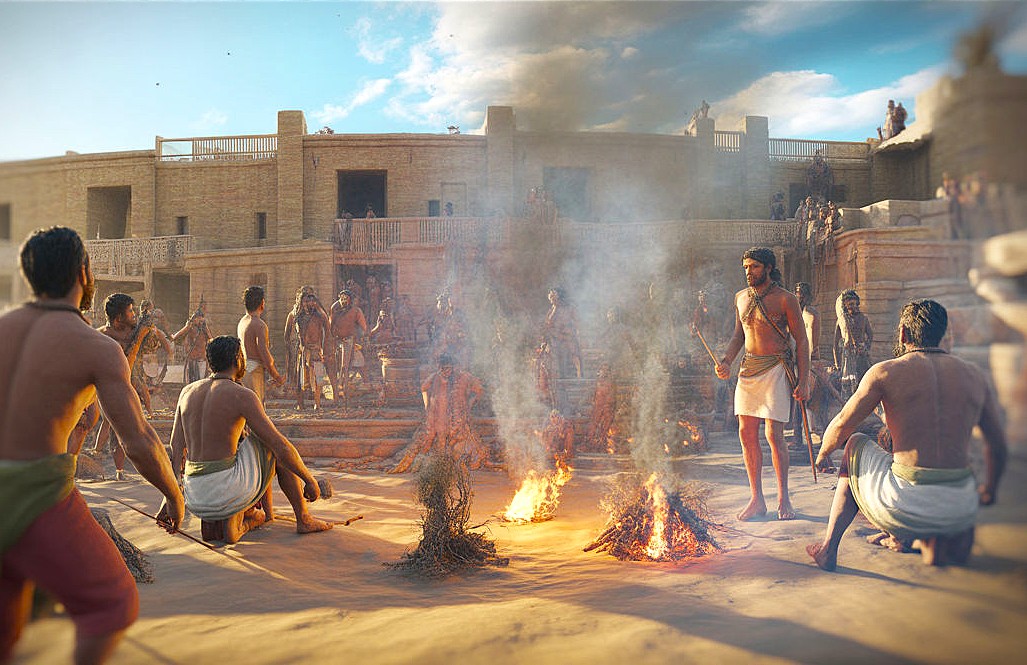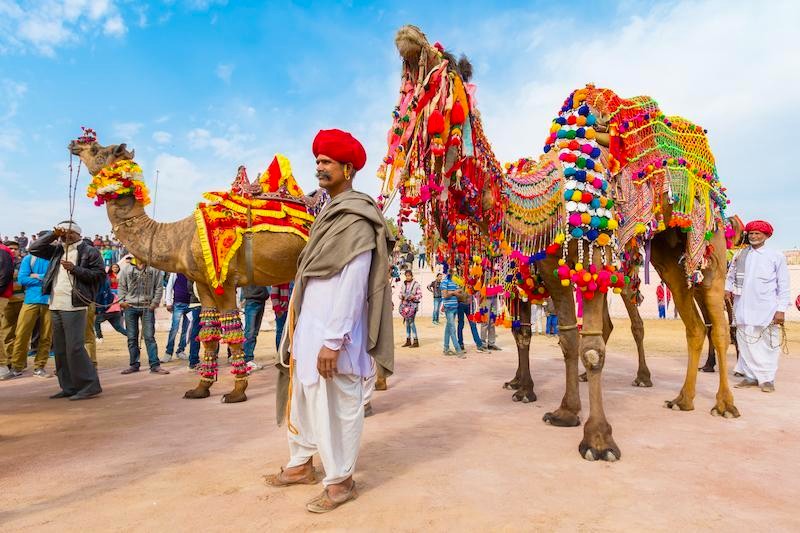Spirit of India
Rajasthan: Ancient Beginings
Discover Life Travel
Unearthing Rajasthan Ancient Beginings
Rajasthan Ancient Beginings. Translating to the "Land of Kingdoms," has a history that stretches far beyond its famed dynasties. Its name owes its origins to the Sanskrit words Rajya - kingdom, and Sthan - place. Ancient evidence dates human presence in this region as far back as 3000 BCE, with connections to the Indus Valley Civilization. The ancient Aravalli Range, one of the world's oldest mountain systems, served as a cradle for these early societies, offering resources and shelter. Archaeological discoveries of Stone Age tools along the Luni River basin suggest human activity dating back to the Paleolithic era, long before the rise of settled agriculture. The subsequent Chalcolithic period witnessed the growth of distinct regional cultures, such as the Ahar-Banas culture, known for its unique pottery.

The Indus Valley Legacy in Rajasthan
Rajasthan Ancient Beginings. The Saraswati-Indus valley civilization, spanning 3300 BCE to 1300 BCE, profoundly influenced this region. Kalibangan, an ancient site in today's Hanumangarh, reveals planned settlements, fire altars, and early agricultural systems. Excavations unearthed terracotta ornaments, barley grains, and plow marks, showing advanced agrarian knowledge and societal division. Water conservation was prioritized, evidenced by reservoirs and wells. The region was a thriving hub of trade and innovation. Although Kalibangan declined due to environmental changes, its contributions are etched into Rajasthan’s roots.
The Early Aryan Settlements

After the decline of the Indus Valley Civilization, Aryan settlements appeared around 1500 BCE in western Rajasthan. The Aryans brought pastoralist traditions and Vedic customs that deeply influenced the region’s social and political organization. Early Aryan texts, such as the Rigveda, praise the Saraswati River and describe the fertility and vitality of Rajasthan’s lands. Discoveries of fire altars in indicate continuity with Aryan rituals, showing their religious influence. Aryans encouraged the use of Sanskrit and established trade, fostering the integration of local cultures with Indian society. Customs connected Rajasthan with the Vedic world, blending indigenous traditions with pan-Indian norms.
The Rise of the Painted Grey Ware Culture
Spanning 1200 BCE - 600 BCE, the Painted Grey Ware (PGW) culture arose simultaneously with Aryan settlements. Pottery excavated in areas such as Gilund reveals distinct patterns: simple, geometric, yet functional. PGW settlements indicate a gradual shift from nomadic to settled agricultural lifestyles. Metal tools, animal rearing, and weaving processes gained prominence. The PGW culture provides glimpses into Rajasthan’s evolving economic and technological identity before the institutionalization of power by later dynasties.
The Iron Age Expansion and Fortified Villages

Between 1000 BCE and 500 BCE, the Iron Age revolutionized Rajasthan's development trajectory. The widespread availability of iron ore deposits led to the creation of durable agricultural tools and superior weaponry, fundamentally transforming local societies. This technological advancement directly contributed to the emergence of well-organized, fortified villages across the landscape. Archaeological excavations at sites like Ahar, dated to this period, have revealed sophisticated infrastructure including substantial granaries and large communal ovens. Strategically positioned at trade route intersections, Ahar's inhabitants effectively controlled valuable networks and resources while maintaining robust defenses against potential invaders.
Buddhist and Jain Influence Before Dynastic Rule
The rise of Buddhism and Jainism during 6th century BCE–1st century CE had a profound role in Rajasthan’s identity. Pilgrimage sites like Hathundi and Osian trace their roots to early Jain centers promoting non-violence and trade prosperity. Rock-carved inscriptions and stupas in Barmer depict the spread of Buddhist teachings under Emperor Ashoka in 3rd century BCE. Rajasthan, during this era, was a confluence of spiritual thought, trade networks, and early urbanization, setting the stage for its later periods of grandeur.
Intermediary Powers: The Scythians and Kushanas

By the 1st century CE, northern Rajasthan came under the control of powerful external forces, notably the Scythians (Shakas) and later the Kushanas. These nomadic warrior groups from Central Asian steppes established significant interactions with indigenous populations, creating a cultural synthesis that blended distinct artistic and religious elements. Major urban centers flourished under Kushana governance, developing into crucial nodes within trading networks that transported silk, spices, and textiles across high-altitude routes connecting India with distant lands. Archaeological discoveries of coin hoards throughout the region provide evidence of mercantile prosperity.
The Gupta Period: Linking the Region to Greater India
Rajasthan Ancient Beginings. The Gupta Dynasty, ruling from 4th to 6th century CE, fostered unification across northwestern India, including Rajasthan. They promoted art, literature, and scientific advances visible in flourishing markets and local academies. Temples at Ranthambore and structures laced with sculptures told tales of India’s golden age. The balance of centralized authority with local governance allowed Rajasthan to become an integrated part of classical Indian civilization while retaining its distinct cultural identity.
The Core Transition: Precursor to Dynastic Glory

Between the 6th and 8th centuries, migratory groups like the Gurjaras gained prominence in Rajasthan, establishing a foundation for future dynasties that would rule the region for centuries. This era saw the early construction of temples in places such as Chittor, demonstrating a developing understanding of structural engineering. Additionally, social institutions evolved as warrior clans consolidated power through regional alliances, reflecting the changing dynamics of the time. The interplay of these groups spurred advancements in art and architecture. These transformations marked a pivotal moment in history, laying the groundwork for subsequent dynasties and create lasting legacies., profoundly influencing the landscape of Rajasthan for future life.
Fasten Your Seatbelt - Let’s Go To India
Let's trace how everything began by exploring scattered remnants of ancient cultures. We’ll walk through Bikaner's ancient streets, marvel at its fire altars, and hear the echoes of early trade settlements. We’ll learn firsthand how Rajasthan’s roots intertwine humanity’s adventures in farming, rituals, and resilience. Each layer reveals rustic ingenuity that still finds a quiet reflection in Rajasthan’s modern homes, inviting us to witness archeological narratives as shared stories of humankind. Join us for your most unbelievable story yet.
The Mutual Benefits of Exchange

Exchange fosters mutual benefits by enhancing relationships and promoting cooperation among individuals, businesses, and nations. When parties engage in trade, they leverage each other's strengths, leading to improved efficiency, creativity, and innovation. This collaborative process often results in higher quality products and services, as each party contributes unique skills, perspectives, and resources. The principle of reciprocity in exchange also helps stimulate economic growth, as resources are distributed more effectively and wisely, benefitting everyone involved. Ultimately, mutual exchange creates a strong network of interdependence, further strengthening relationships and supporting long-term, sustainable development across societies.